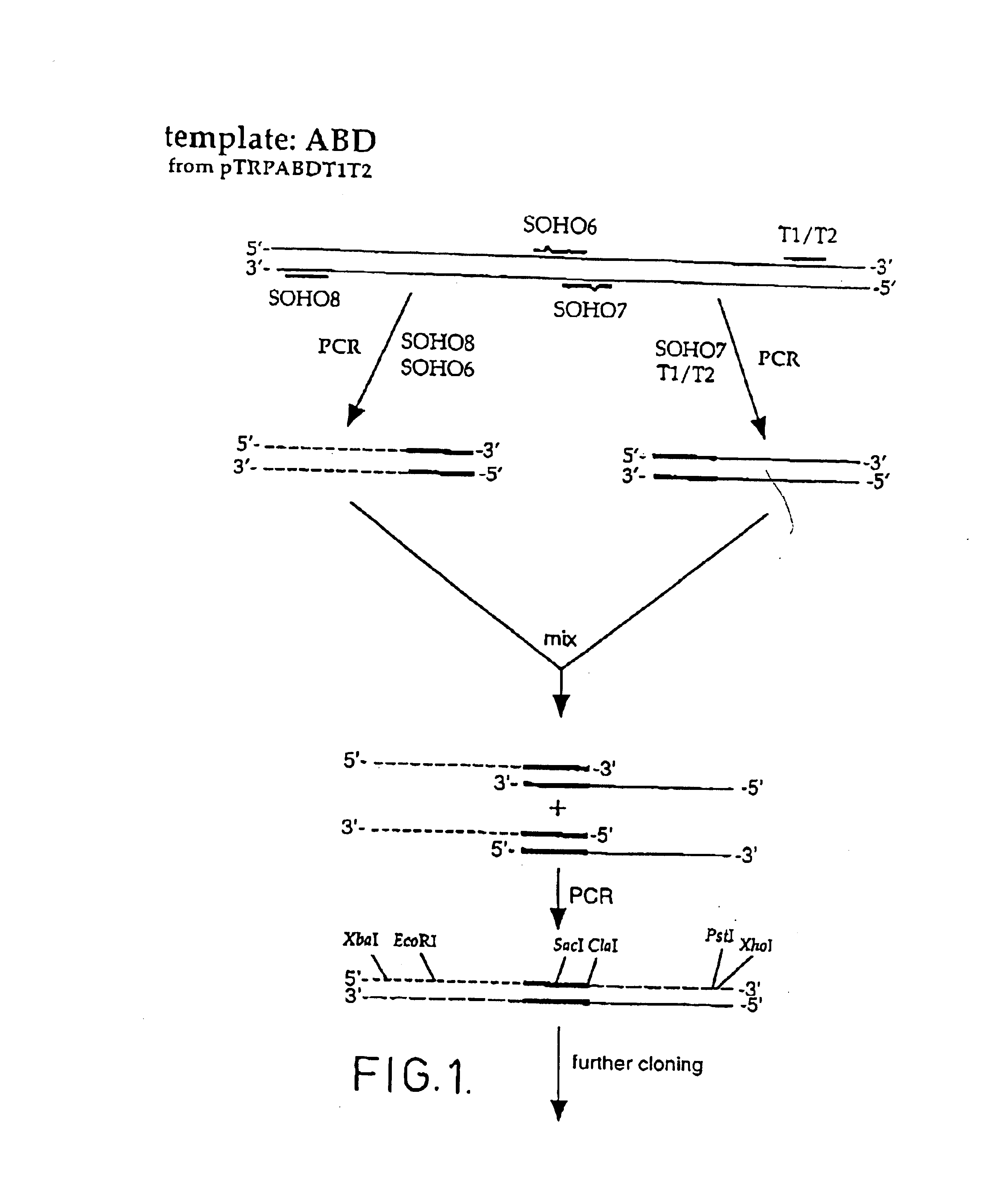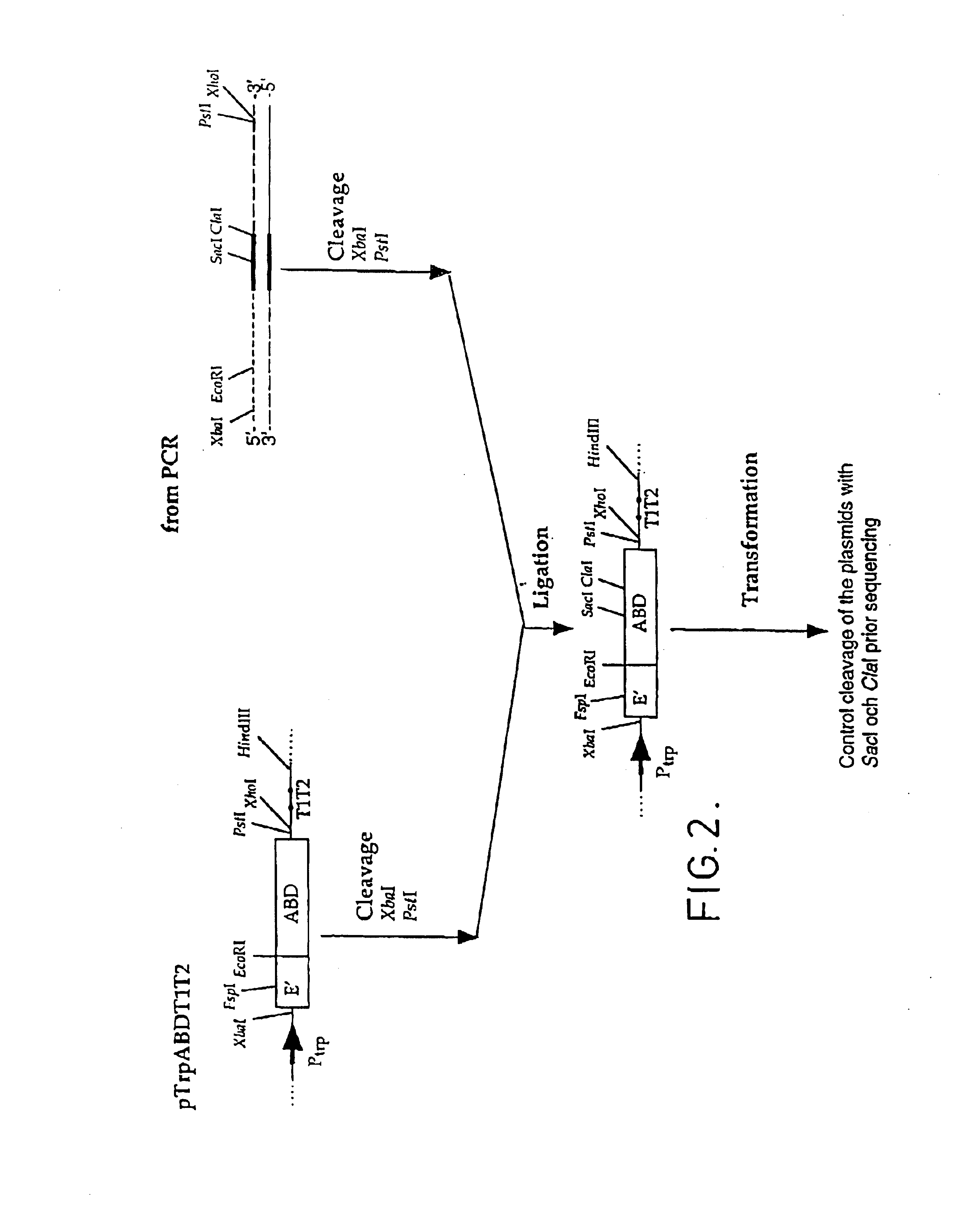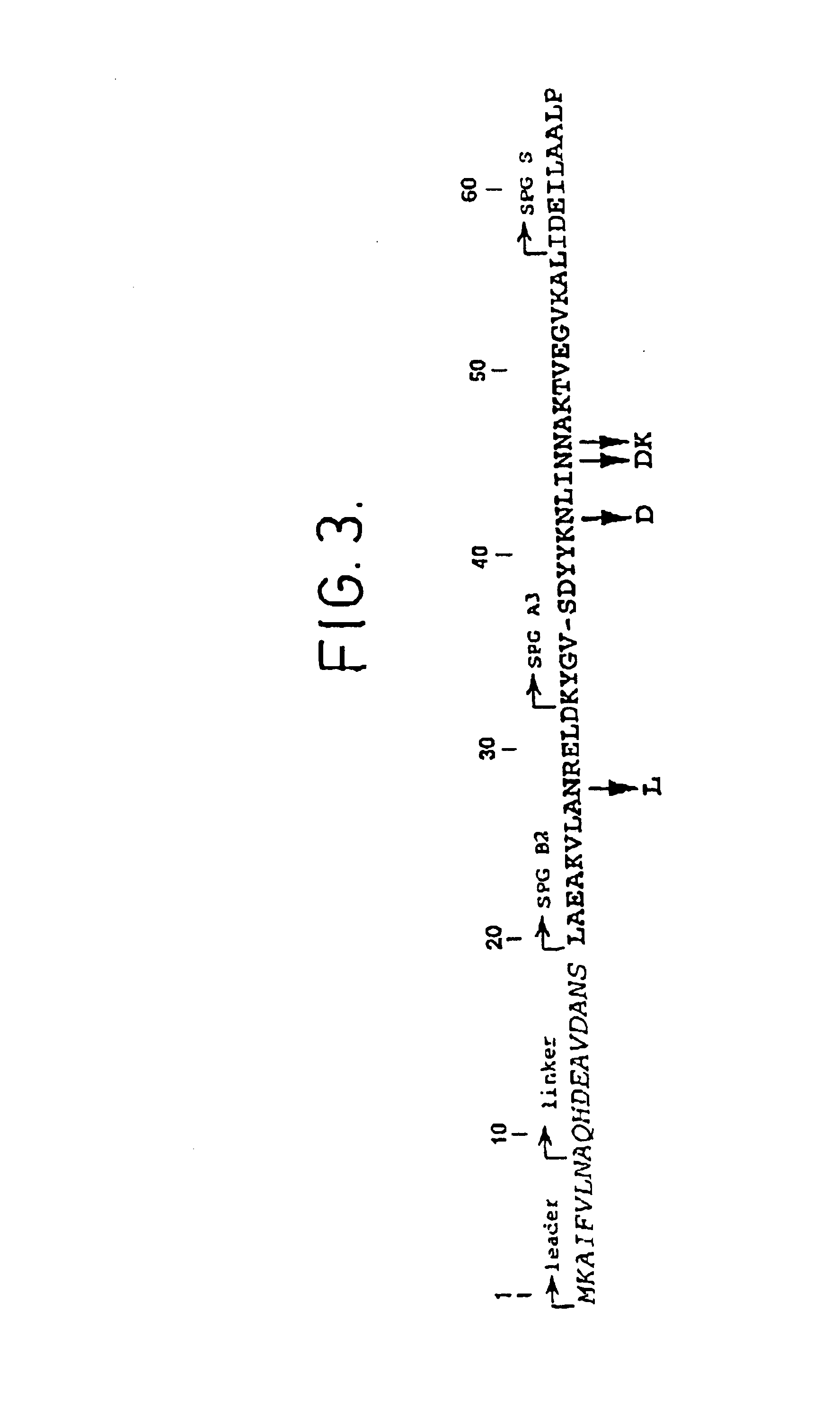Method of affinity separation and ligands for use therein
a technology of affinity separation and ligands, applied in the field of affinity separation, can solve the problems of reducing the system's efficacy, and affecting the effectiveness of protein-based affinity media
- Summary
- Abstract
- Description
- Claims
- Application Information
AI Technical Summary
Problems solved by technology
Method used
Image
Examples
example 2
Expression and Purification
E. coli cells harboring the plasmid encoding ABDmut and also the wild type ABD as a reference were grown over night in shake flasks containing 500 ml Tryptic Soy Broth (30 g / l) supplemented with yeast extract (Difco, USA) (5 g / l) and kanamycin monosulphate (50 mg / l). Since the ABD gene is under control of the tryptophan promoter, the m-RNA production starts when the amino acid is missing in the growth medium. Cells were harvested after 20 hours by centrifugation, 4000.times.g in 10 minutes. After resuspending the cells in 30 ml TST (25 mM Tris-HCl, pH 7.5, 150 mM NaCl, 0.05% Tween 20) they were fractured by sonication. After that a centrifugation step was performed, approximately 40,000.times.g in 20 minutes. The supernatant was filtered (0.49 .mu.m). The soluble protein was isolated by affinity chromatography on human serum albumin (HSA) Sepharose as described by Stahl et al. (1989) J. Immunol. Meth. 124, 43-52. The protein content in eluted fractions was...
example 3
Binding Characteristics Before and After NaOH-treatment
In order to examine the stability of ABDwt and ABDmut, the binding characteristics were analysed before and after treatment with 0.5 M NaOH in room temperature for 24 hours. Both ABDwt and ABDmut were solubilized in 1.times.HBS (10 mM HEPES, pH 7.4, 150 mM NaCl, 3.4 mM EDTA, 0.005% P20) to a concentration of 800 nM and analyzed on BIAcore 2000 (Biacore AB, Uppsala, Sweden). In order to determine the activity change after exposure to a very alkaline environment, the proteins were solubilized in 0.5 M NaOH. After incubation in NaOH for 24 hours, the samples were run through a NAP-10 column (Amersham Pharmacia Biotech, Uppsala, Sweden) equilibrated with 30 mM NH.sub.4 Ac. The protein containing samples were lyophilized and resolubilised in 1.times.HBS to a concentration of 800 nM in order to be analyzed in the BIAcore 2000.
BIAcore Analysis
A BIAcore 2000 instrument (Biacore AB) was used for real time affinity analysis. HSA and IgG w...
example 4
Preparation of Affinity Matrices
In order to evaluate the usability of the stabilized HSA-binding protein in biotechnology, two affinity chromatography matrices were prepared; one with the unmutated protein (ABDwt) as a control and the other with the mutated ABD (ABDmut). The matrix used was Sepharose 4B (Amersham Pharmacia Biotech, Uppsala, Sweden) with carbodiimide CMC (Sigma Aldrich, Sweden) as the coupling reagent. ABDwt (4.5 mg) and ABDmut (8.5 mg) were dissolved in 9 ml water separately. 3.5 and 5.0 ml gel was added to ABDwt and ABDmut solutions respectively. Finally 0.38 g of CMC was added to the solutions and they were incubated at room temperature over night. The gels were packed on HR columns (d=5 mm, h=43 mm) and pulsed with 0.5 M ethanolamine, 0.5 M NaCl, pH 8.3 in order to inactivate the matrix and 0.1 M NaAc, 0.5 M NaCl, pH 4 in order to wash unbounded proteins out. After this, the columns were ready to use for affinity purification of HSA.
PUM
| Property | Measurement | Unit |
|---|---|---|
| molecular weight | aaaaa | aaaaa |
| molecular weight | aaaaa | aaaaa |
| molecular weight | aaaaa | aaaaa |
Abstract
Description
Claims
Application Information
 Login to View More
Login to View More - R&D
- Intellectual Property
- Life Sciences
- Materials
- Tech Scout
- Unparalleled Data Quality
- Higher Quality Content
- 60% Fewer Hallucinations
Browse by: Latest US Patents, China's latest patents, Technical Efficacy Thesaurus, Application Domain, Technology Topic, Popular Technical Reports.
© 2025 PatSnap. All rights reserved.Legal|Privacy policy|Modern Slavery Act Transparency Statement|Sitemap|About US| Contact US: help@patsnap.com



